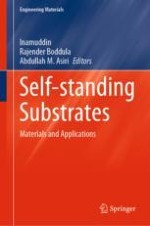Abstract
Despite there are structures invisible for the human eye, they mastered the world of advanced electronic devices, sensors, novel cosmetics or drugs. When the dimensions of the materials go down to the nanometres scale, their properties change dramatically comparing to the observable objects. Because of their tiny size, they gained the name of nanomaterials but simultaneously their importance has significantly grown up. Nanomaterials exhibit superb features such as a distinctive catalytic activity, hydrophobicity, photoconversion activity and biological affinity. Following that, even a small amount of nanomaterials is sufficient to provide unusual properties to the final products such as coatings, active layers in solar cells, clothes, electrodes and electrolytes used for energy storage devices. Owing to the rapid development in the synthesis methods and characterization techniques, especially those used for morphology inspection, we can investigate them in details on the molecular scale and describe the mechanism that stays behind improved antimicrobiological activity, hydrophobicity, capacitance or catalytic properties. Despite the number of usable elements is limited, the diversity of morphologies, namely rods, particles, tubes, planes and the possibility of heterostructures formation, provides researchers the wide room for maneuverer. Sometimes, only small change in the material geometry, structure or a little amount of introduced dopant atoms is enough to obtain completely new nanomaterial that has not been known so far. Therefore, we should not be surprised how fast surrounding environment is changing and our everyday life is supported by the novelties from the nano world. The aim of this chapter is to present the diversity of nanomaterials taking into account their dimensions, shape and composition. Herein, particles, tubes, wires, pores, walls, exhibiting at least one dimension within the nanoscale will be evoked. Moreover, the nanostructures that morphology reminds well known objects from nature are discussed. The description of some interesting examples is supported by the extraordinary SEM images illustrating the beauty unavailable for naked eye.
